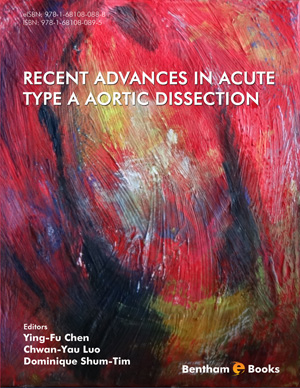Abstract
SHS investigation development is considered from the geographical and historical viewpoint. 3 stages are described. Within Stage 1 the work was carried out in the Department of the Institute of Chemical Physics in Chernogolovka where the scientific discovery had been made. At Stage 2 the interest to SHS arose in different cities and towns of the former USSR. Within Stage 3 SHS entered the international scene. Now SHS processes and products are being studied in more than 50 countries.
Abstract
Acute (type A) aortic dissection is a life-threatening condition that requires prompt diagnosis and management. Risk factors include hypertension, pregnancy, coarctation of the aorta, bicuspid aortic valve, inflammatory and connective tissue disorders, and prior aortic or cardiac surgery. The typical clinical presentation includes sudden-onset severe chest pain that may radiate to the neck or back. Although routine tests, such as an electrocardiogram (ECG), a chest X-ray (CXR), and a D-dimer may raise the suspicion of aortic dissection, none is sufficient as the sole diagnostic test. A triple rule-out computed tomography (CT) scan has a high negative predictive value for excluding acute coronary syndrome, pulmonary embolism, and aortic dissection in patients who present with an undifferentiated chest pain syndrome, negative cardiac biomarkers, and a non-diagnostic ECG. Patients presenting with conditions that predispose them to aortic dissection or high-risk features in a history or on a physical examination should undergo definitive diagnostic imaging of the aorta. CT is the most frequently used imaging modality because of its availability, speed, and high sensitivity and specificity. Transesophageal echocardiography, which offers sensitivity and specificity similar to that of CT, can be used with unstable patients. Currently, magnetic resonance imaging (MRI) is infrequently used in acute settings because image acquisition times are longer and the modality is less widely available. However, newer imaging sequences that can be done rapidly without breath-holding and without an intravenous contrast medium may increase the utility of MRI in the future.
Keywords:
Acute aortic syndrome, Acute coronary syndrome, Acute type A aortic dissection, Aortic dissection, Aortography, Biomarker, Chest radiograph, Computed tomography, D-dimer, Echo-cardiogram, Intimal flap, Intramural hematoma, magnetic resonance imaging, Magnetic resonance imaging, Mediastinal width, Multidetector CT, Penetrating atherosclerotic ulcer, Transesophageal echocardiography, Transthoracic, Triple rule-out.
Recommended Chapters
We recommend

Authors:Bentham Science Books


 Download PDF Flyer
Download PDF Flyer



